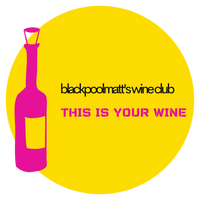crémant
Champagne is sparkling wine, but not all sparkling wine is champagne. There are plenty of alternatives to champagne, even if they vary in style and quality—and not everything should be the same. Champagne itself is a small region, producing around 300m bottles a year—if we had to rely solely on champagne for our bubbles, we’d quickly run out, not just of wine but money.
The closest international alternatives to champagne are cooler regions like England and Tasmania, though even these high-quality wines vary: the high acidity of England requires some dosage, while Tasmania will be a little fruitier. Franciacorta in northern Italy also produces similar styles to champagne, though again they're fruitier as it's a slightly warmer climate. Then there's cava in Spain, which is made the same way but often not aged for as long, and made from local varieties such as Xarel·lo, Macabeo, and Parellada rather than Pinot Noir and Chardonnay.
So as soon as we start exploring sparkling wine that isn't champagne we find a world of differences. And that's true within France, where there are plenty of alternatives to champagne which can provide great value and are consistently better than they used to be.
crémant de …
In 1976, two new appellations in Burgundy and Alsace were created for sparkling wine and were given the name crémant. This is an old champagne term for a lightly sparkling, slightly creamy wine. In 1985, when Spain was about to join the EU, these terms became officially designated: champagne could only come from Champagne, but champagne producers could no longer use the term crémant.
The idea was to create a designation that covered many French areas across the country and create an easily recognizable commercial product. Unfortunately, it didn’t quite work because producers saw crémant as an afterthought and a way of getting rid of rotten grapes. Moreover, each crémant appellation uses different grape varieties—Chenin Blanc in Loire Valley, Pinot Blanc in Alsace, varieties like Muscat and Mauzac in southern France—which means there isn’t a consistent style across the different regions.
But that also means there is the potential to express local identity and differentiate the wines from champagne itself. And quality is definitely rising in some of the crémant appellations: here are some examples in blackpoolmatt’s wine club.
Domaine Anne et Marc Wassler Crémant d'Alsace Brut Rosé NV
Alsace produces 50% of all crémant in France, and is of consistently good quality. Located in north-east France, Alsace is cool and dry, making it perfect for sparkling wine production, even if it's more famous for aromatic wines made from grapes such as Riesling, Pinot Gris, and Gewurztraminer. Pinot Noir is also planted—in Alsace a sparkling rosé has to be 100% Pinot Noir and it provides a great base for sparkling wine, with high acid, low tannins, and red fruit, floral aromatics.
This sparkling rosé from Domaine Wassler is a perfect representation of Crémant d'Alsace, which is most often found as a rosé rather than a white. It's fruity, fun, approachable, and not expensive ($24). I wouldn't compare this to the best pink champagne, but then that's not the point: this is a weekday alternative, and who doesn't want a fun bottle of bubbles on a Wednesday evening?
(As an aside, this is from 2019, but Crémant d’Alsace cannot be vintage-dated.)
Clos de la Briderie "Pureté de Silex" Crémant de Loire Rosé NV
Sparkling rosé is perhaps where crémant is at its most consistent, because of the fruitier style—this wine has quite a high dosage of 11g/L, but that complements the fruity, creamy strawberry character. The Loire Valley has the perfect climate for sparkling wine and is another go-to for everyday bubbles. The fun aspect to this wine is the local grape varieties which give the wine a unique identity: Pineau d'Aunis, Grolleau Noir and Gris, and Pinot Noir, which all have red fruit aromas, high acid, and low tannins, making them ideal for sparkling rosé.
Gouffier Extra Brut Crémant de Bourgogne 2018
Not all crémant is everyday drinking, and they can compete against the best champagne. Burgundy has everything in its favor for sparkling wine: climate, soils, and grape varieties. However, the best grapes are saved for expensive still wine, so Crémant de Bourgogne has never hit the heights its potential deserves. That's slowly changing, as producers source fruit specifically picked for sparkling wine from sites too cool for still wine. Gouffier are based near the appellation of Rully, which is where historically the best sparkling wine in Burgundy has been sourced. A blend of Pinot Noir and Chardonnay, you'd be hard pressed to distinguish this from champagne.
When I entered the wine industry, one of the first things I became excited about was how to discover great value, high-quality alternatives to world famous regions. I'll always treasure champagne for its quality, class, and ageability, but crémant increasingly offers a more affordable but still extremely pleasurable alternative without having to spend too much money.
other crémants not (yet) in blackpoolmatt’s wine club
… de Limoux—located in Languedoc, lays a slightly dubious claim to have invented sparkling wine before champagne; good-value wines from Chardonnay, Chenin Blanc, and local variety Mauzac; there’s also the super-traditional sweet, lightly sparkling Blanquette de Limoux
… de Die—located between northern and southern Rhône, Die is more known for sweet, low-alcohol wines from Muscat which are confusingly labelled Clairette de Die
… de Savoie and de Jura—new additions to the crémant designations and well worth checking out as the regions’ cool climates are ideal for sparkling wine. There’s also sweet, sparkling red wine from Bugey in Savoie, which everyone wants …
… de Bordeaux—easily the worst of the crémant appellations as little thought is given to the wines. Avoid.
In short, the reason blackpoolmatt’s wine club has crémant from Alsace, Loire, and Burgundy is threefold: these are the most consistent, most similar in style to champagne, and represent great value. Santé!
